-
Executive Summary
-
Market Introduction
-
Market Definition
-
Scope of the Study
- Research Objectives
- Assumptions & Limitations
-
Markets Structure
-
Key
-
Takeaways
-
Market Research Methodology
-
Research Process
-
Primary Research
-
Secondary Research
-
Market Size Estimation
-
Forecast Model
-
Market Dynamics of the Global Ethylene Tetrafluoroethylene
-
(ETFE) Market
-
Introduction
-
Drivers
-
Restraints
-
Opportunities
-
Challenges
-
Trends/Technology
-
Market
-
Factor Analysis of the Global Ethylene Tetrafluoroethylene (ETFE) Market
-
Supply Chain Analysis
-
Pricing Analysis
-
Raw Product Suppliers
-
Manufacturers/Producers
-
Distributors/Retailers/Wholesalers/E-Commerce
-
End User
-
Porter’s Five Forces Analysis
- Threat of New Entrants
- Bargaining Power of Buyers
- Bargaining Power of Suppliers
- Threat of Substitutes
- Intensity of Competitive Rivalry
-
Global Ethylene Tetrafluoroethylene (ETFE) Market, by Technology
-
Introduction
-
Extrusion
- Market Estimates & Forecast,
- Market Estimates & Forecast, by Region, 2020-2027
- Market Estimates & Forecast, 2020-2027
- Market
-
Injection
-
Estimates & Forecast, by Region, 2020-2027
-
Global Ethylene Tetrafluoroethylene
-
(ETFE) Market, by Product Form
-
Introduction
-
Pellet/Granule
- Market Estimates & Forecast, 2020-2027
- Market Estimates &
- Powder
-
Forecast, by Region, 2020-2027
-
Forecast, 2020-2027
-
Global Ethylene Tetrafluoroethylene (ETFE) Market, by Application
-
Introduction
-
Film & Sheets
- Market Estimates & Forecast,
- Market Estimates & Forecast, by Region, 2020-2027
- Market Estimates & Forecast, 2020-2027
-
Wire & Cable
-
Market Estimates & Forecast, by Region, 2020-2027
-
Coatings
- Market Estimates & Forecast,
-
Market Estimates & Forecast, 2020-2027
-
by Region, 2020-2027
-
Tubes
- Market Estimates & Forecast,
- Market Estimates & Forecast, by Region, 2020-2027
- Market Estimates & Forecast, 2020-2027
- Market Estimates
-
Others
-
& Forecast, by Region, 2020-2027
-
Global Ethylene Tetrafluoroethylene
-
(ETFE) Market, by End-Use Industry
-
Introduction
-
Automotive
- Market Estimates & Forecast, 2020-2027
- Market Estimates &
-
Forecast, by Region, 2020-2027
-
Construction
- Market Estimates
- Market Estimates & Forecast, by Region,
-
& Forecast, 2020-2027
-
Aerospace & Defense
- Market Estimates & Forecast,
- Market Estimates & Forecast, by Region, 2020-2027
- Market Estimates & Forecast, 2020-2027
- Market
-
Nuclear
-
Estimates & Forecast, by Region, 2020-2027
-
Medical
- Market
- Market Estimates & Forecast,
-
Estimates & Forecast, 2020-2027
-
by Region, 2020-2027
-
Others
- Market Estimates & Forecast,
- Market Estimates & Forecast, by Region, 2020-2027
-
Global Ethylene Tetrafluoroethylene (ETFE) Market, by Region
-
Introduction
-
North America
- Market Estimates & Forecast, 2020-2027
-
Market Estimates & Forecast, by Technology, 2020-2027
-
& Forecast, by Product Form, 2020-2027
-
by Application, 2020-2027
-
Industry, 2020-2027
-
Market Estimates
-
Market Estimates & Forecast,
-
Market Estimates & Forecast, by End-Use
-
US
-
Market Estimates & Forecast,
-
Market Estimates & Forecast, by Product, 2020-2027
-
Market Estimates & Forecast, by Product Form, 2020-2027
-
Market Estimates & Forecast, by Application, 2020-2027
-
Estimates & Forecast, End-Use Industry, 2020-2027
-
Market Estimates & Forecast, 2020-2027
-
Forecast, by Product, 2020-2027
-
Product Form, 2020-2027
-
Market
-
Canada
-
Market Estimates &
-
Market Estimates & Forecast, by
-
Market Estimates & Forecast, by Application,
-
Market Estimates & Forecast, by End-Use Industry, 2020-2027
-
Europe
- Market Estimates & Forecast, 2020-2027
-
Market Estimates & Forecast, by Product, 2020-2027
-
& Forecast, by Product Form, 2020-2027
-
by Application, 2020-2027
-
Industry, 2020-2027
-
Market Estimates
-
Market Estimates & Forecast,
-
Market Estimates & Forecast, by End-Use
-
Germany
-
Market Estimates & Forecast,
-
Market Estimates & Forecast, by Product, 2020-2027
-
Market Estimates & Forecast, by Product Form, 2020-2027
-
Market Estimates & Forecast, by Application, 2020-2027
-
Estimates & Forecast, by End-Use Industry, 2020-2027
-
Market Estimates & Forecast, 2020-2027
-
Forecast, by Product, 2020-2027
-
Product Form, 2020-2027
-
Market
-
France
-
Market Estimates &
-
Market Estimates & Forecast, by
-
Market Estimates & Forecast, by Application,
-
Market Estimates & Forecast, by End-Use Industry, 2020-2027
-
Italy
-
Market Estimates & Forecast, 2020-2027
-
Market Estimates & Forecast, by Product, 2020-2027
-
& Forecast, by Product Form, 2020-2027
-
Forecast, by Application, 2020-2027
-
by End-Use Industry, 2020-2027
-
& Forecast, 2020-2027
-
Market Estimates
-
Market Estimates &
-
Market Estimates & Forecast,
-
Spain
-
Market Estimates
-
Market Estimates & Forecast, by Product,2020-2027
-
Market Estimates & Forecast, by Product Form,2020-2027
-
Market Estimates & Forecast, by Application,2020-2027
-
& Forecast, by End-Use Industry, 2020-2027
-
Estimates & Forecast, 2020-2027
-
by Product,2020-2027
-
Form,2020-2027
-
Russia
-
Market Estimates
-
UK
-
Market
-
Market Estimates & Forecast,
-
Market Estimates & Forecast, by Product
-
Market Estimates & Forecast, by Application,2020-2027
-
Market Estimates & Forecast, by End-Use Industry, 2020-2027
-
Market Estimates & Forecast, 2020-2027
-
Market Estimates & Forecast, by Product,2020-2027
-
& Forecast, by Product Form,2020-2027
-
Forecast, by Application,2020-2027
-
by End-Use Industry, 2020-2027
-
& Forecast, 2020-2027
-
Market Estimates
-
Market Estimates &
-
Market Estimates & Forecast,
-
Poland
-
Market Estimates
-
Market Estimates & Forecast, by Product,
-
Market Estimates & Forecast, by Product Form, 2020-2027
-
Market Estimates & Forecast, by Application, 2020-2027
-
Market Estimates & Forecast, by End-Use Industry, 2020-2027
-
of Europe
-
Rest
-
Market Estimates & Forecast, 2020-2027
-
Market Estimates & Forecast, by Product, 2020-2027
-
& Forecast, by Product Form, 2020-2027
-
Forecast, by Application, 2020-2027
-
by End-Use Industry, 2020-2027
-
& Forecast, 2020-2027
-
Market Estimates
-
Market Estimates &
-
Market Estimates & Forecast,
-
Asia-Pacific
- Market Estimates
- Market Estimates & Forecast, by Product,
- Market Estimates & Forecast, by Product Form, 2020-2027
- Market Estimates & Forecast, by Application, 2020-2027
-
Market Estimates & Forecast, by End-Use Industry, 2020-2027
-
& Forecast, by Product, 2020-2027
-
by Product Form, 2020-2027
-
China
-
Market Estimates & Forecast, 2020-2027
-
Market Estimates
-
Market Estimates & Forecast,
-
Market Estimates & Forecast, by Application,
-
Market Estimates & Forecast, by End-Use Industry, 2020-2027
-
India
-
Market Estimates & Forecast, 2020-2027
-
Market Estimates & Forecast, by Product, 2020-2027
-
& Forecast, by Product Form, 2020-2027
-
Forecast, by Application, 2020-2027
-
by End-Use Industry, 2020-2027
-
& Forecast, 2020-2027
-
Market Estimates
-
Market Estimates &
-
Market Estimates & Forecast,
-
Japan
-
Market Estimates
-
Market Estimates & Forecast, by Product,
-
Market Estimates & Forecast, by Product Form, 2020-2027
-
Market Estimates & Forecast, by Application, 2020-2027
-
Market Estimates & Forecast, by End-Use Industry, 2020-2027
-
& New Zealand
-
Australia
-
Market Estimates & Forecast, 2020-2027
-
Market Estimates & Forecast, by Product, 2020-2027
-
& Forecast, by Product Form, 2020-2027
-
Forecast, by Application, 2020-2027
-
by End-Use Industry, 2020-2027
-
Market Estimates & Forecast, 2020-2027
-
Forecast, by Product, 2020-2027
-
by Product Form, 2020-2027
-
Estimates & Forecast, by Product Form, 2020-2027
-
& Forecast, by Application, 2020-2027
-
by End-Use Industry, 2020-2027
-
Forecast, 2020-2027
-
Market Estimates
-
Market Estimates &
-
Market Estimates & Forecast,
-
Rest of Asia-Pacific
-
Market Estimates &
-
Market Estimates & Forecast,
-
Market Estimates & Forecast, by Application,
-
Market Estimates & Forecast, by End-Use Industry, 2020-2027
-
Middle East & Africa
- Market Estimates & Forecast, 2020-2027
- Market Estimates & Forecast, by Product, 2020-2027
- Market
- Market Estimates
- Market Estimates & Forecast,
- GCC
-
Market Estimates & Forecast, by Application, 2020-2027
-
Estimates & Forecast, by End-Use Industry, 2020-2027
-
Market Estimates & Forecast, 2020-2027
-
Forecast, by Product, 2020-2027
-
Product Form, 2020-2027
-
Market
-
Israel
-
Market Estimates &
-
Market Estimates & Forecast, by
-
Market Estimates & Forecast, by Application,
-
Market Estimates & Forecast, by End-Use Industry, 2020-2027
-
North Africa
-
Market Estimates & Forecast, 2020-2027
-
Market Estimates & Forecast, by Product, 2020-2027
-
Market Estimates & Forecast, by Product Form, 2020-2027
-
Estimates & Forecast, by Application, 2020-2027
-
& Forecast, by End-Use Industry, 2020-2027
-
Market Estimates & Forecast, 2020-2027
-
Forecast, by Product, 2020-2027
-
Product Form, 2020-2027
-
Forecast, 2020-2027
-
Market
-
Market Estimates
-
Turkey
-
Market Estimates &
-
Market Estimates & Forecast, by
-
Market Estimates & Forecast, by Application,
-
Market Estimates & Forecast, by End-Use Industry, 2020-2027
-
Rest of Middle East & Africa
-
Market Estimates &
-
Market Estimates & Forecast, by Product,
-
Market Estimates & Forecast, by Product Form, 2020-2027
-
Market Estimates & Forecast, by Application, 2020-2027
-
Market Estimates & Forecast, by End-Use Industry, 2020-2027
-
Latin
- Market Estimates & Forecast, 2020-2027
- Market
- Market Estimates &
- Market Estimates & Forecast,
- Market Estimates & Forecast, by End-Use
- Brazil
-
America
-
Estimates & Forecast, by Product, 2020-2027
-
Forecast, by Product Form, 2020-2027
-
by Application, 2020-2027
-
Industry, 2020-2027
-
Market Estimates & Forecast, by Application, 2020-2027
-
Estimates & Forecast, by End-Use Industry, 2020-2027
-
& Forecast, by Product, 2020-2027
-
by Product Form, 2020-2027
-
Market
-
Argentina
-
Market Estimates & Forecast, 2020-2027
-
Market Estimates
-
Market Estimates & Forecast,
-
Market Estimates & Forecast, by Application,
-
Market Estimates & Forecast, by End-Use Industry, 2020-2027
-
Mexico
-
Market Estimates & Forecast, 2020-2027
-
Market Estimates & Forecast, by Product, 2020-2027
-
& Forecast, by Product Form, 2020-2027
-
Forecast, by Application, 2020-2027
-
by End-Use Industry, 2020-2027
-
Market Estimates & Forecast, 2020-2027
-
Forecast, by Product, 2020-2027
-
Product Form, 2020-2027
-
Market Estimates
-
Market Estimates &
-
Market Estimates & Forecast,
-
Rest of Latin America
-
Market Estimates &
-
Market Estimates & Forecast, by
-
Market Estimates & Forecast, by Application,
-
Market Estimates & Forecast, by End-Use Industry, 2020-2027
-
Company Landscape
-
Introduction
-
Market Key Strategies
-
Key Development Analysis (Expansion/Merger & Acquisitions/Joint Venture/New
-
Product Development/Agreement/Investment)
-
Company Profiles
-
3M
- Company Overview
- Financial Updates
- Product/Business
- Key Strategies
- Key Developments
-
Segment Overview
-
SWOT Analysis
-
AGC Inc.
- Company Overview
- Financial
- Product/Business Segment Overview
- Key Strategies
- Key Developments
- SWOT Analysis
-
Updates
-
Hubei Everflon
- Company Overview
- Financial Updates
- Product/Business Segment Overview
- Key Strategies
- SWOT Analysis
-
Polymer CO., Ltd.
-
Key Developments
-
DAIKIN INDUSTRIES, Ltd.
- Company Overview
- Financial Updates
- Product/Business
- Key Strategies
- Key Developments
-
Segment Overview
-
SWOT Analysis
-
Vector Foiltec.
- Company Overview
- Product/Business Segment Overview
- Key
- Key Developments
- SWOT Analysis
-
Financial Updates
-
Strategies
-
DuPont
- Company Overview
- Financial Updates
- Product/Business Segment Overview
- Key Strategies
- SWOT Analysis
-
de Nemours, Inc.
-
Key Developments
-
Ensinger
- Company
- Financial Updates
- Product/Business Segment Overview
- Key Strategies
- Key Developments
- SWOT Analysis
-
Overview
-
Conclusion
-
LIST OF TABLES
-
Global Ethylene Tetrafluoroethylene
-
(ETFE) Market, by Region, 2020-2027
-
North America: Ethylene Tetrafluoroethylene
-
(ETFE) Market, by Country, 2020-2027
-
Europe: Ethylene Tetrafluoroethylene
-
(ETFE) Market, by Country, 2020-2027
-
Asia-Pacific: Ethylene Tetrafluoroethylene
-
(ETFE) Market. by Country, 2020-2027
-
Middle East & Africa: Ethylene
-
Tetrafluoroethylene (ETFE) Market, by Country, 2020-2027
-
Latin America:
-
Ethylene Tetrafluoroethylene (ETFE) Market, by Country, 2020-2027
-
Global
-
Ethylene Tetrafluoroethylene (ETFE) Technology Market, by Regions, 2020-2027
-
North America: Ethylene Tetrafluoroethylene (ETFE) Technology Market,
-
by Country, 2020-2027
-
Europe: Ethylene Tetrafluoroethylene (ETFE) Technology
-
Market, by Country, 2020-2027
-
Table10 Asia-Pacific: Ethylene Tetrafluoroethylene
-
(ETFE) Technology Market, by Country, 2020-2027
-
Table11 Middle East & Africa:
-
Ethylene Tetrafluoroethylene (ETFE) Technology Market, by Country, 2020-2027
-
Table12 Latin America: Ethylene Tetrafluoroethylene (ETFE) Technology Market,
-
by Country, 2020-2027
-
Table13 Global Ethylene Tetrafluoroethylene (ETFE) Product
-
Form Market, by Regions, 2020-2027
-
Table14 North America: Ethylene Tetrafluoroethylene
-
(ETFE) Product Form Market, by Country, 2020-2027
-
Table15 Europe: Ethylene
-
Tetrafluoroethylene (ETFE) Product Form Market, by Country, 2020-2027
-
Table16
-
Asia-Pacific: Ethylene Tetrafluoroethylene (ETFE) Product Form Market, by Country,
-
Table17 Middle East & Africa: Ethylene Tetrafluoroethylene (ETFE)
-
Product Form Market, by Country, 2020-2027
-
Table18 Latin America: Ethylene
-
Tetrafluoroethylene (ETFE) Product Form Market, by Country, 2020-2027
-
Table19
-
Global Ethylene Tetrafluoroethylene (ETFE) Application Market, by Regions, 2020-2027
-
Table20 North America: Ethylene Tetrafluoroethylene (ETFE) Application Market,
-
by Country, 2020-2027
-
Table21 Europe: Ethylene Tetrafluoroethylene (ETFE) Application
-
Market, by Country, 2020-2027
-
Table22 Asia-Pacific: Ethylene Tetrafluoroethylene
-
(ETFE) Application Market, by Country, 2020-2027
-
Table23 Middle East &
-
Africa: Ethylene Tetrafluoroethylene (ETFE) Application Market, by Country, 2020-2027
-
Table24 Latin America: Ethylene Tetrafluoroethylene (ETFE) Application Market,
-
by Country, 2020-2027
-
Table25 Global Ethylene Tetrafluoroethylene (ETFE) End-Use
-
Industry Market, by Regions, 2020-2027
-
Table26 North America: Ethylene Tetrafluoroethylene
-
(ETFE) End-Use Industry Market, by Country, 2020-2027
-
Table27 Europe: Ethylene
-
Tetrafluoroethylene (ETFE) End-Use Industry Market, by Country, 2020-2027
-
Table28
-
Asia-Pacific: Ethylene Tetrafluoroethylene (ETFE) End-Use Industry Market, by Country,
-
Table29 Middle East & Africa: Ethylene Tetrafluoroethylene (ETFE)
-
End-Use Industry Market, by Country, 2020-2027
-
Table30 Latin America: Ethylene
-
Tetrafluoroethylene (ETFE) by End-Use Industry Market, by Country, 2018-2025
-
Table31 Global Technology Market, by Region, 2020-2027
-
Table32 Global Product
-
Form Market, by Region, 2020-2027
-
Table33 Global Application Market, by Region,
-
Table34 Global End-Use Industry Market, by Region, 2020-2027
-
Table35
-
North America: Ethylene Tetrafluoroethylene (ETFE) Market, by Country, 2020-2027
-
Table36 North America: Ethylene Tetrafluoroethylene (ETFE) Market, by Technology,
-
Table37 North America: Ethylene Tetrafluoroethylene (ETFE) Market,
-
by Product Form, 2020-2027
-
Table38 North America: Ethylene Tetrafluoroethylene
-
(ETFE) Market, by Application, 2020-2027
-
Table39 North America: Ethylene Tetrafluoroethylene
-
(ETFE) Market, by End-Use Industry, 2020-2027
-
Table40 Europe: Ethylene Tetrafluoroethylene
-
(ETFE) Market, by Country, 2020-2027
-
Table41 Europe: Ethylene Tetrafluoroethylene
-
(ETFE) Market, by Technology, 2020-2027
-
Table42 Europe: Ethylene Tetrafluoroethylene
-
(ETFE) Market, by Product Form, 2020-2027
-
Table43 Europe: Ethylene Tetrafluoroethylene
-
(ETFE) Market, by Application, 2020-2027
-
Table44 Europe: Ethylene Tetrafluoroethylene
-
(ETFE) Market, by End-Use Industry, 2020-2027
-
Table45 Asia-Pacific: Ethylene
-
Tetrafluoroethylene (ETFE) Market, by Country, 2020-2027
-
Table46 Asia-Pacific:
-
Ethylene Tetrafluoroethylene (ETFE) Market, by Technology, 2020-2027
-
Table47
-
Asia-Pacific: Ethylene Tetrafluoroethylene (ETFE) Market, by Product Form, 2020-2027
-
Table48 Asia-Pacific: Ethylene Tetrafluoroethylene (ETFE) Market, by Application,
-
Table49 Asia-Pacific: Ethylene Tetrafluoroethylene (ETFE) Market,
-
by End-Use Industry, 2020-2027
-
Table50 Middle East & Africa: Ethylene
-
Tetrafluoroethylene (ETFE) Market, by Country, 2020-2027
-
Table51 Middle East
-
& Africa: Ethylene Tetrafluoroethylene (ETFE) Market, by Technology, 2020-2027
-
Table52 Middle East & Africa: Ethylene Tetrafluoroethylene (ETFE) Market,
-
by Product Form, 2020-2027
-
Table53 Middle East & Africa: Ethylene Tetrafluoroethylene
-
(ETFE) Market, by Application, 2020-2027
-
Table54 Middle East & Africa:
-
Ethylene Tetrafluoroethylene (ETFE) Market, by End-Use Industry, 2020-2027
-
Table55
-
Latin America: Ethylene Tetrafluoroethylene (ETFE) Market, by Country, 2020-2027
-
Table56 Latin America: Ethylene Tetrafluoroethylene (ETFE) Market, by Technology,
-
Table57 Latin America: Ethylene Tetrafluoroethylene (ETFE) Market,
-
by Product Form, 2020-2027
-
Table58 Latin America: Ethylene Tetrafluoroethylene
-
(ETFE) Market, by Application, 2020-2027
-
Table59 Latin America: Ethylene Tetrafluoroethylene
-
(ETFE) Market, by End-Use Industry, 2020-2027
-
LIST OF FIGURES
-
Global Ethylene Tetrafluoroethylene (ETFE) Market Segmentation
-
FIGURE
-
Forecast Research Methodology
-
Five Forces Analysis of the Global
-
Ethylene Tetrafluoroethylene (ETFE) Market
-
Value Chain of the Global
-
Ethylene Tetrafluoroethylene (ETFE) Market
-
Global Ethylene Tetrafluoroethylene
-
(ETFE) Market, 2020-2027, by Country, 2020
-
Share of Global Ethylene
-
Tetrafluoroethylene (ETFE) Market, by Country, 2020-2027
-
Global Ethylene
-
Tetrafluoroethylene (ETFE) Market Size, by Technology, 2020
-
Share
-
of Global Ethylene Tetrafluoroethylene (ETFE) Market, by Technology, 2020-2027
-
Global Ethylene Tetrafluoroethylene (ETFE) Market Size, by Product Form,
-
FIGURE10 Share of Global Ethylene Tetrafluoroethylene (ETFE) Market, by
-
Product Form, 2020-2027
-
FIGURE11 Global Ethylene Tetrafluoroethylene (ETFE)
-
Market Size, by Application, 2020
-
FIGURE12 Share of Global Ethylene Tetrafluoroethylene
-
(ETFE) Market, by Application, 2020-2027
-
FIGURE13 Global Ethylene Tetrafluoroethylene
-
(ETFE) Market Size, by End-Use Industry, 2020
-
FIGURE14 Share of Global Ethylene
-
Tetrafluoroethylene (ETFE) Market, by End-Use Industry, 2020-2027

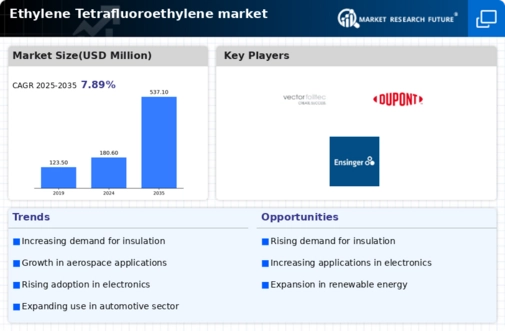

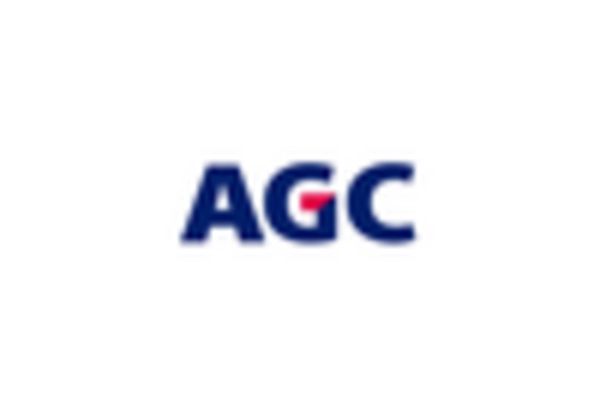
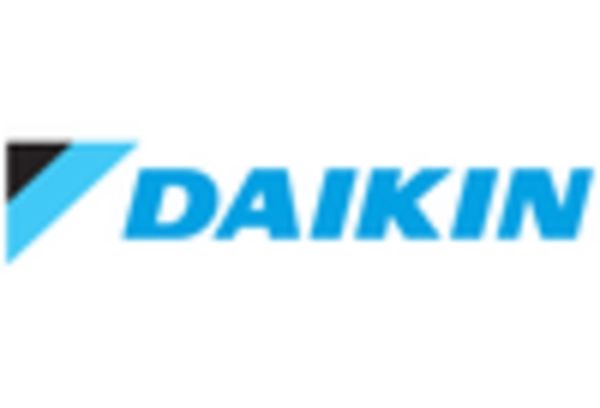
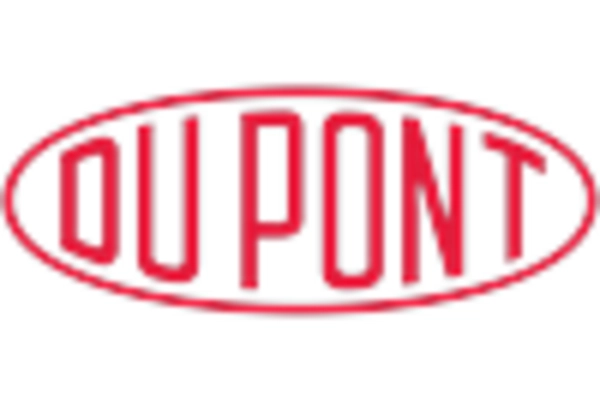

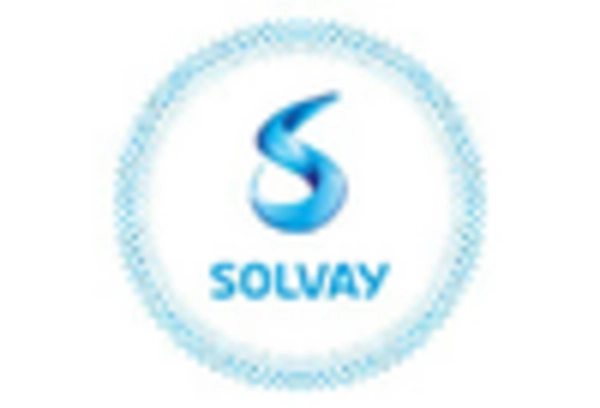









Leave a Comment